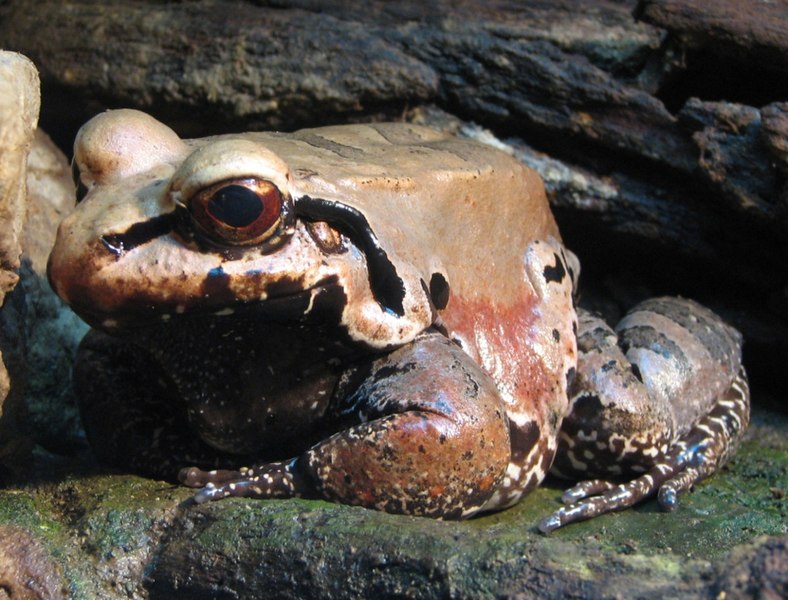Today’s update, while concerning an animal not suited as a pet (the American Alligator, Alligator mississippiensis) will I’m sure will be of interest to all who keep or study reptiles. Scientists from the Savannah River Ecology Lab, working with alligators in Louisiana’s Rockefeller Wildlife Refuge, were surprised to find a high degree of mate fidelity in their study population.
Remaining Faithful Despite Choices
Writing in the October, 2009 issue of Molecular Ecology, the researchers explained that 70% of the female alligators they studied over a 10 year period mated with the same male each year. This is the first time such behavior has been documented in any Crocodilian, and is rendered even more interesting by the fact that the refuge supports a very dense population of alligators, and females freely move through the territories of a great many males.
A Look Back in Time
Crocodilians are the sole surviving reptiles classified as Archosaurs, a group that includes the dinosaurs and which gave rise to the birds (some taxonomists argue that alligators are closely related to birds, and should be removed from the Class Reptilia). It is hoped that this newly discovered alligator mating behavior will reveal something about the mating strategies of dinosaurs and the ancestors of modern day birds.
Working With Crocodilians
Crocodilians make poor pets, but, as you see from the accompanying photos, they can be exciting to work with in zoos (please be in touch if you’re considering a career in herpetology).
A pair of Cuban crocodiles (Crocodylus rhombifer) under my care at the Bronx Zoo produced young together over a period spanning 40 years (the photo shows some of the “little ones” rushing to a meal) – but, unlike the Louisiana gators, they were housed together, without others of their kind, and so had little choice!
Further Reading
To read about how other research with alligators is granting us a peek at how dinosaurs may have lived, please see this piece.
 That Reptile Blog – Reptile, Amphibian and Exotic Pet Care and Information
That Reptile Blog – Reptile, Amphibian and Exotic Pet Care and Information

 and paralysis (difficulty hopping, problems catching food, etc.). I’ve run across this myself when raising American toad tadpoles for a release program in NYC, where most of the tadpoles transformed, but died soon after.
and paralysis (difficulty hopping, problems catching food, etc.). I’ve run across this myself when raising American toad tadpoles for a release program in NYC, where most of the tadpoles transformed, but died soon after. transformed toads helps, but we really do not know what most species, especially North American natives, actually require.
transformed toads helps, but we really do not know what most species, especially North American natives, actually require.
 land. In the wild, rain washes the tadpoles into a nearby pool, where they develop in normal frog fashion…following suit, I successfully reared a number in water. I subsequently learned that some frog nests are placed far from the water’s edge, and that the tadpoles therein develop entirely on land. But what did they eat…the nest’s foam, perhaps? There were theories, but no answers.
land. In the wild, rain washes the tadpoles into a nearby pool, where they develop in normal frog fashion…following suit, I successfully reared a number in water. I subsequently learned that some frog nests are placed far from the water’s edge, and that the tadpoles therein develop entirely on land. But what did they eat…the nest’s foam, perhaps? There were theories, but no answers. Subsequent research has revealed that the harried mother uses her rear legs in an attempt to re-distribute the unusual food, and perhaps to give all of her gluttonous progeny a chance to feed. She has her work cut out for her…the 25 to 50 tadpoles that she rears require 10,000 to 25,000 unfertilized eggs to see them through to metamorphosis!
Subsequent research has revealed that the harried mother uses her rear legs in an attempt to re-distribute the unusual food, and perhaps to give all of her gluttonous progeny a chance to feed. She has her work cut out for her…the 25 to 50 tadpoles that she rears require 10,000 to 25,000 unfertilized eggs to see them through to metamorphosis!